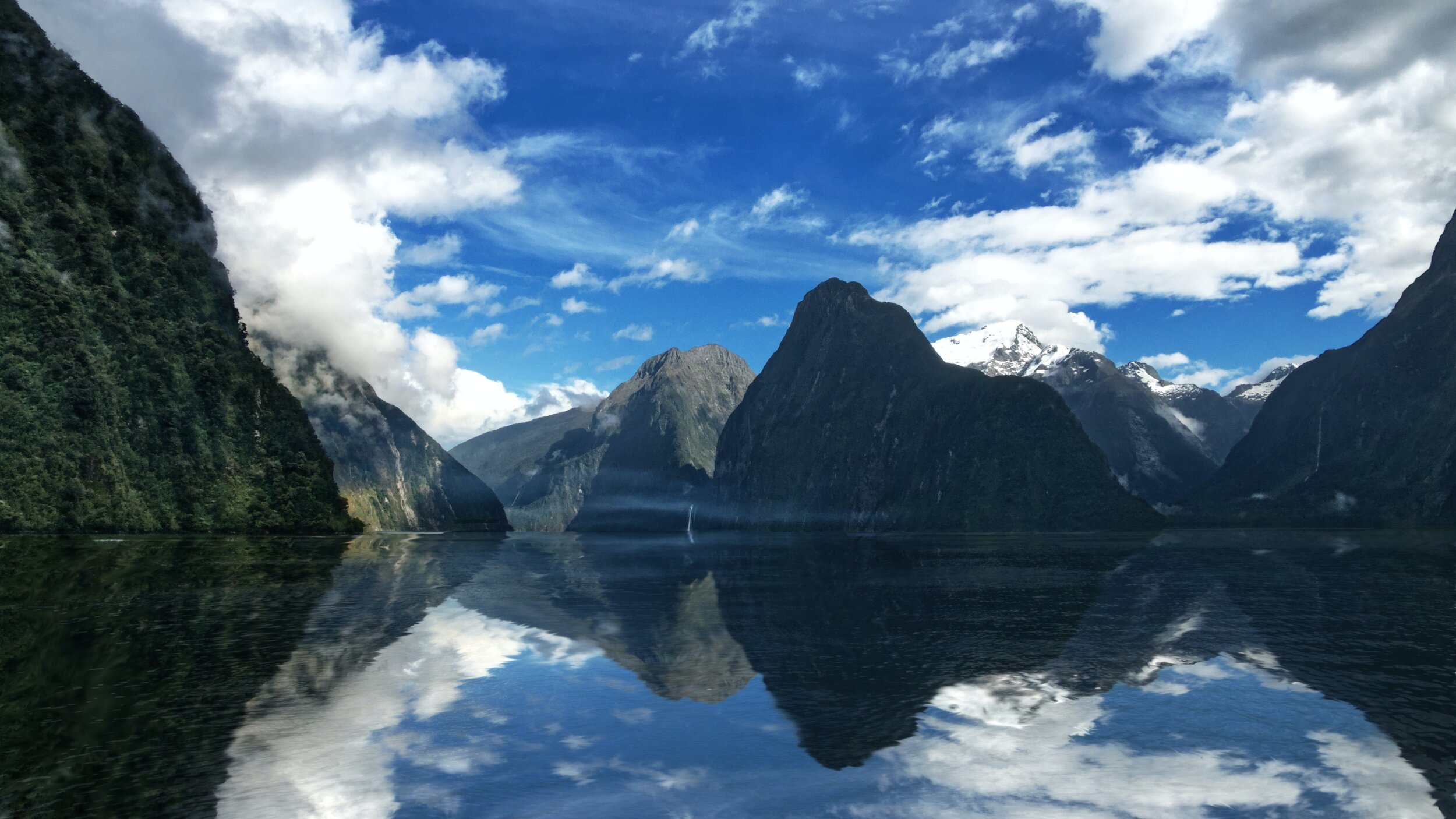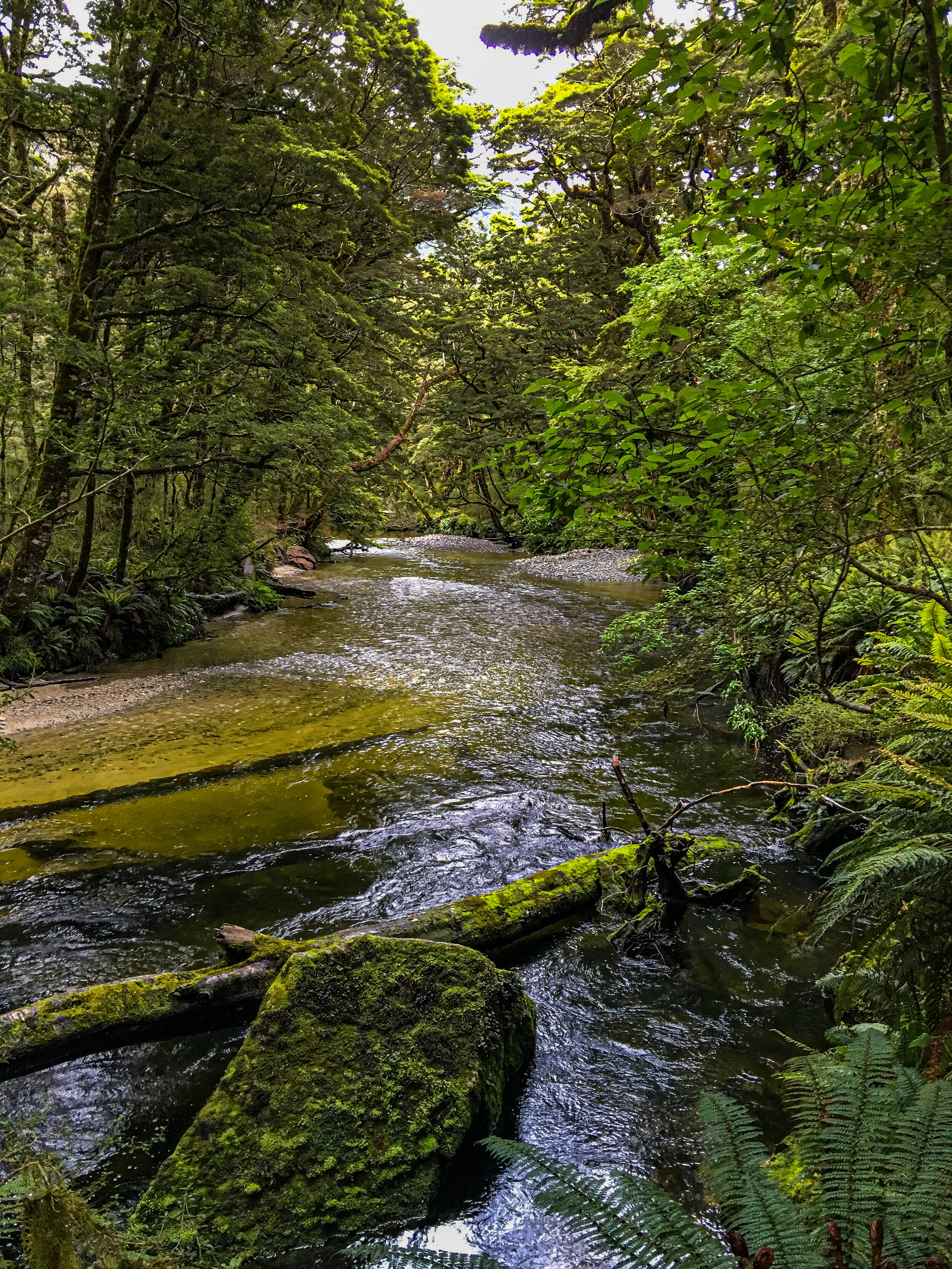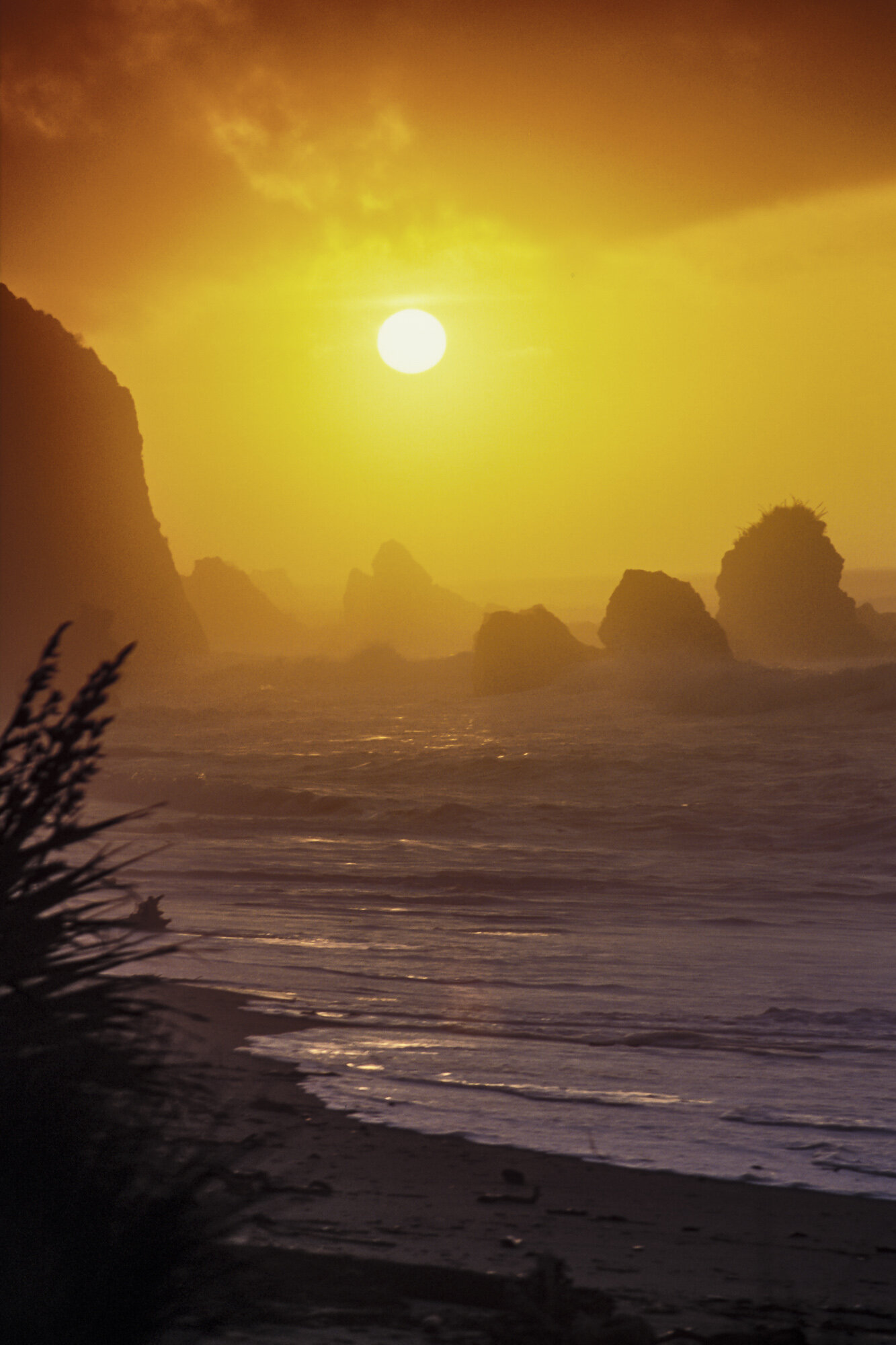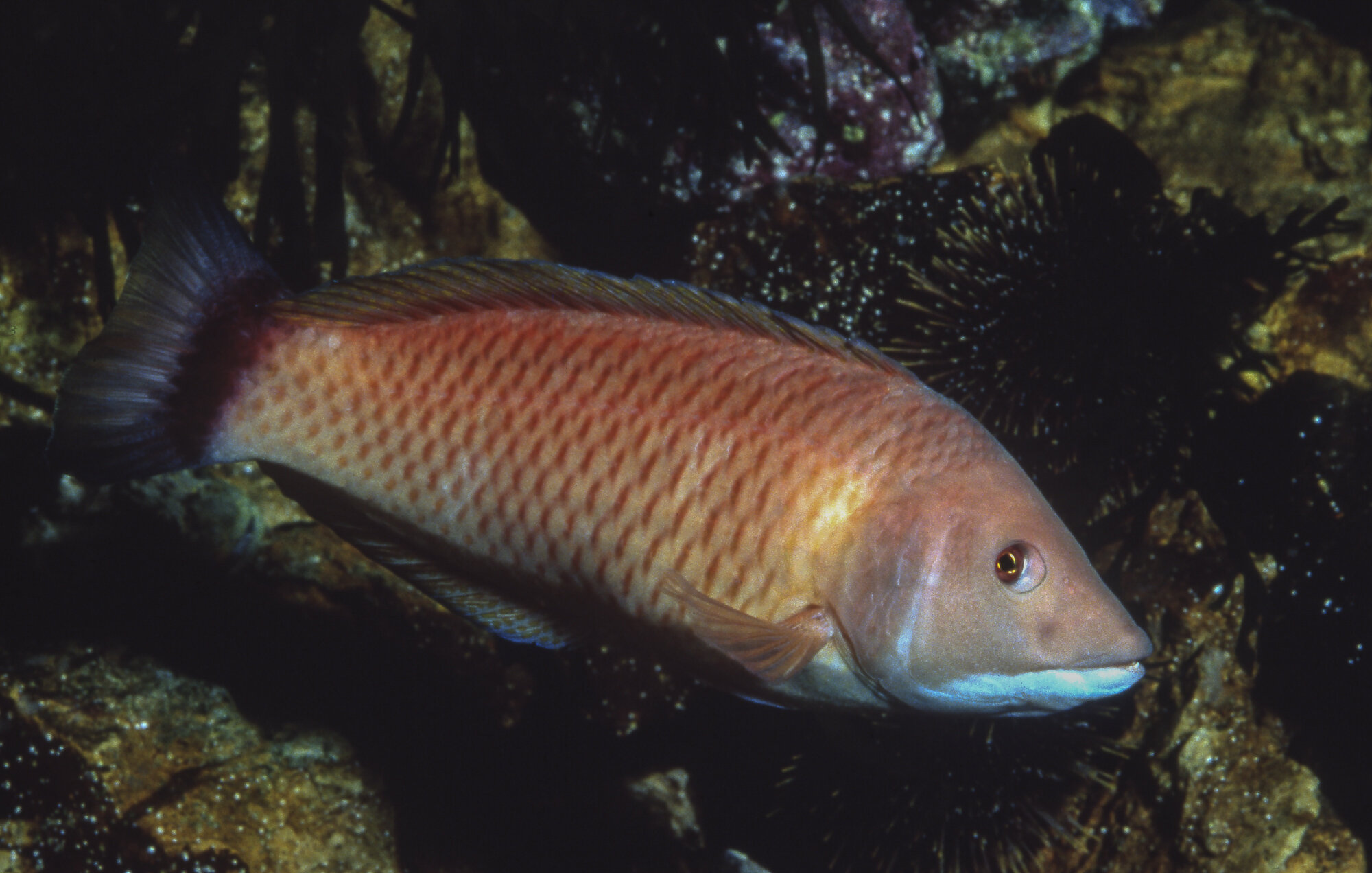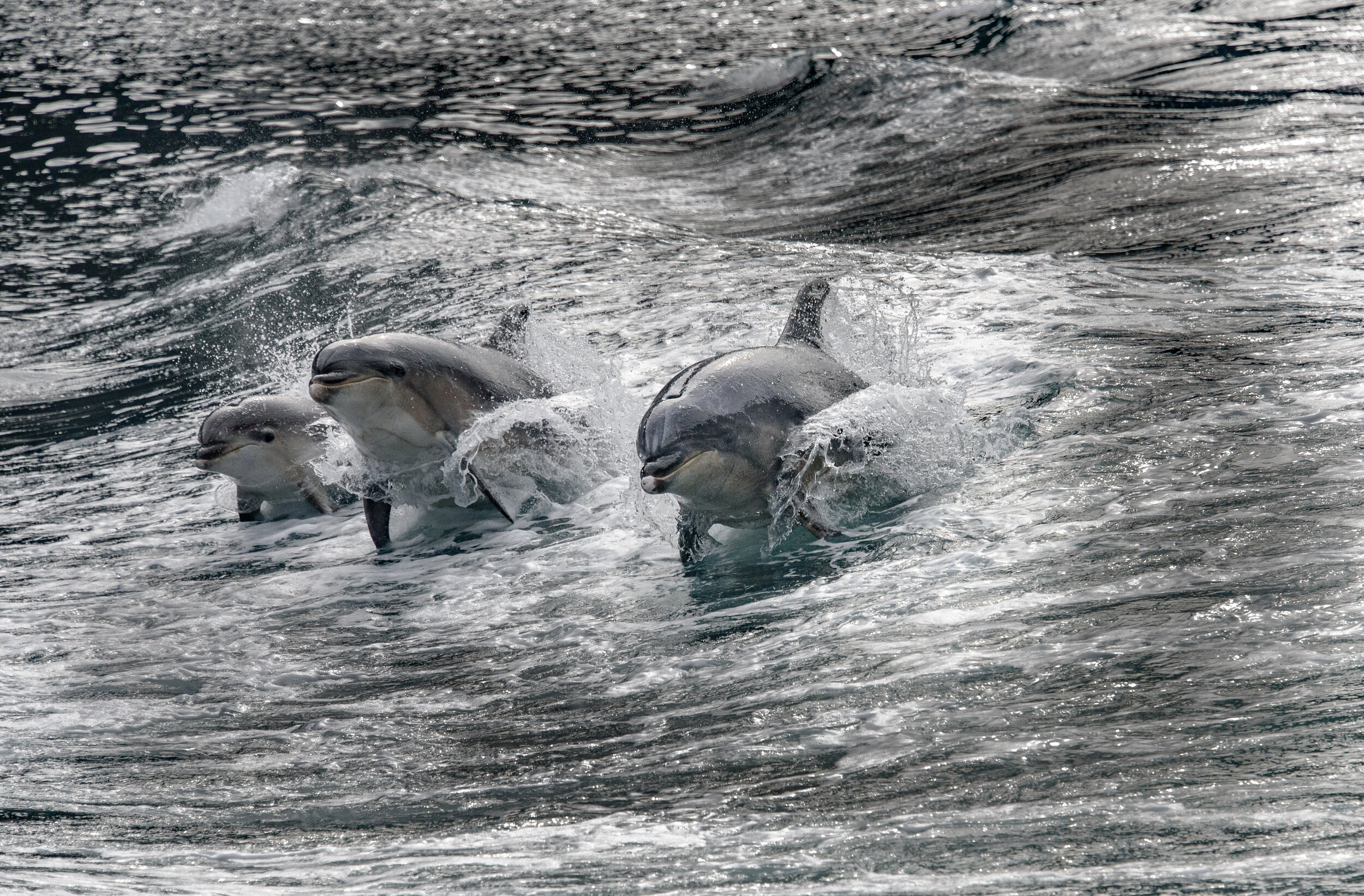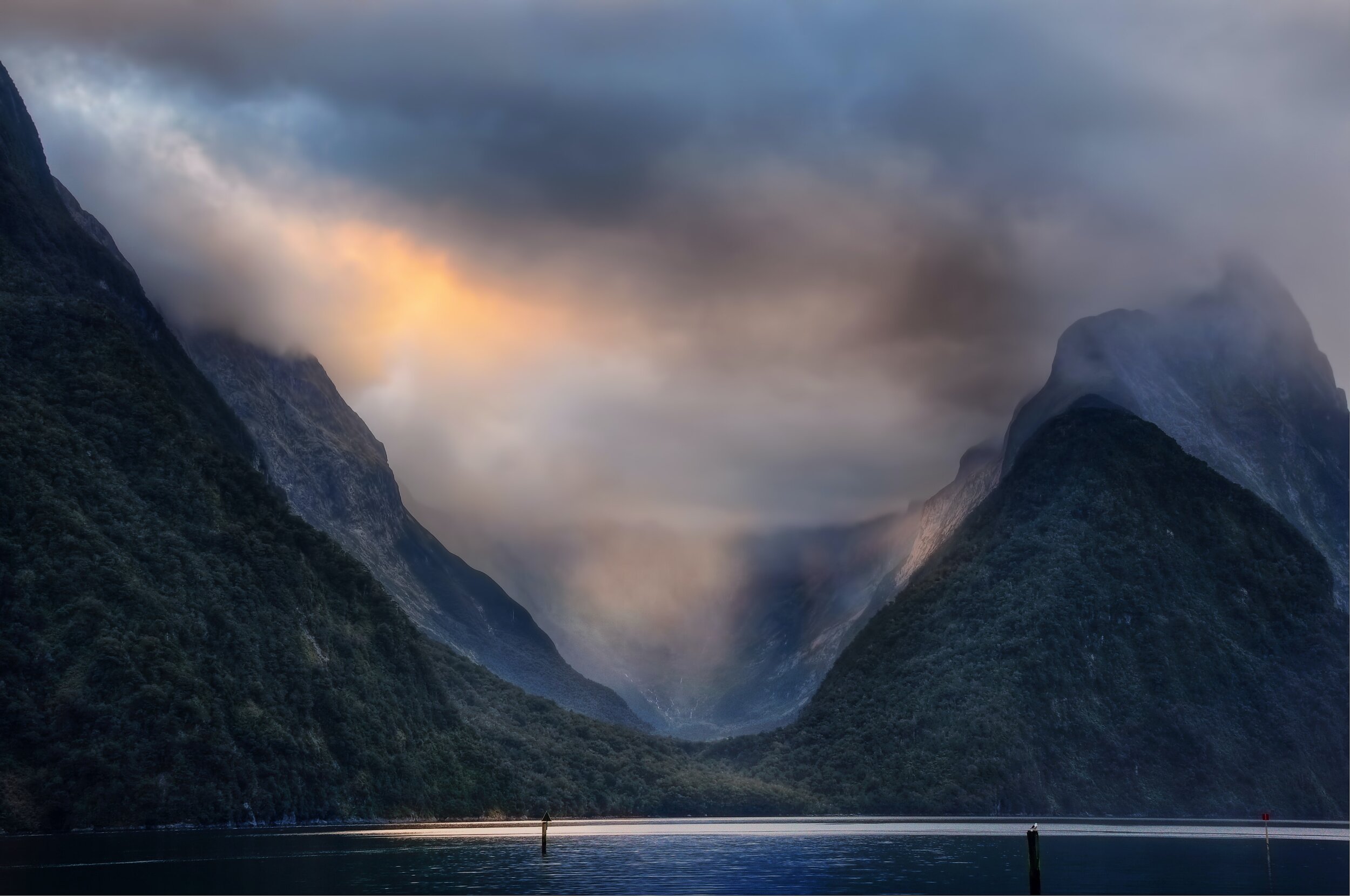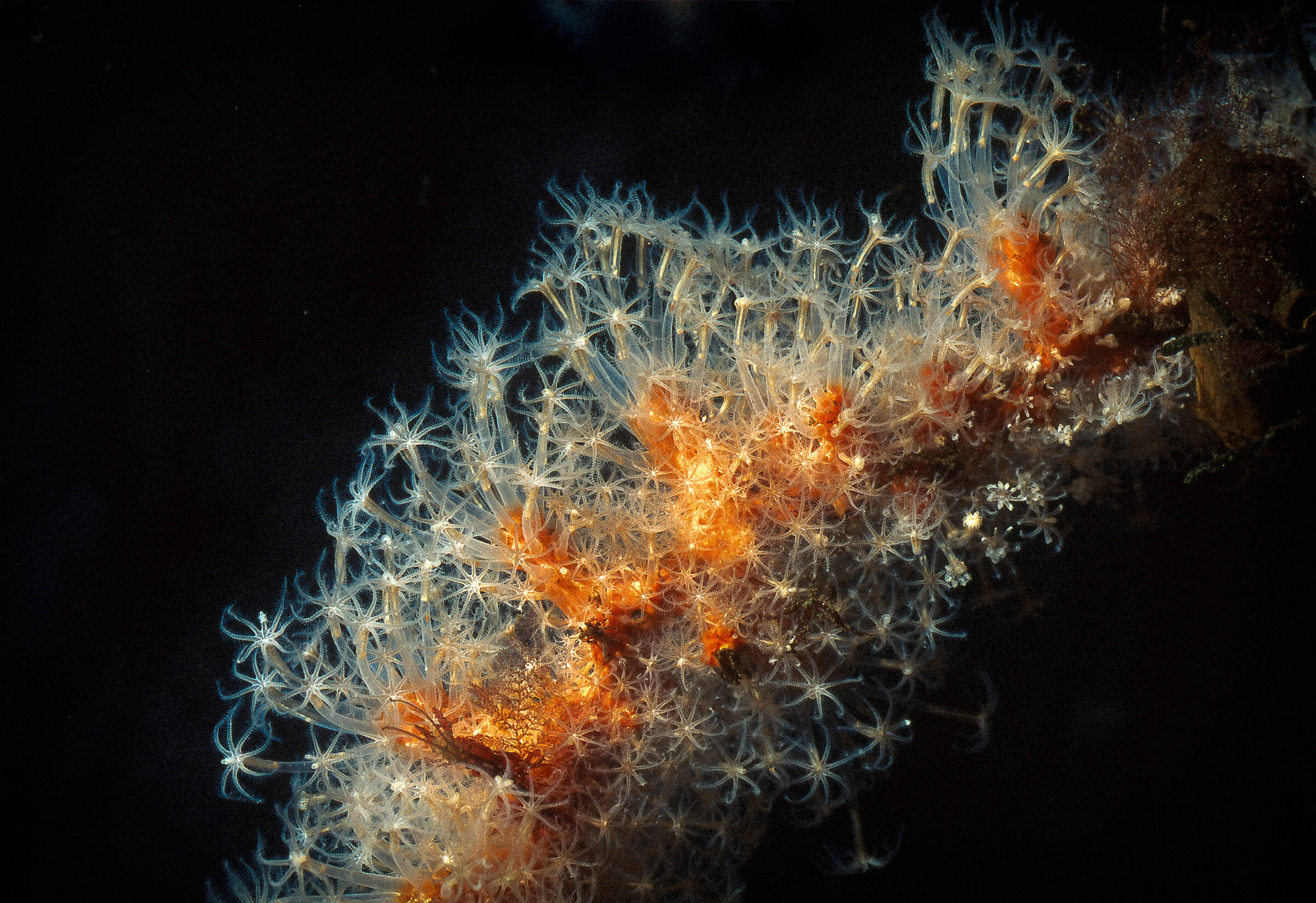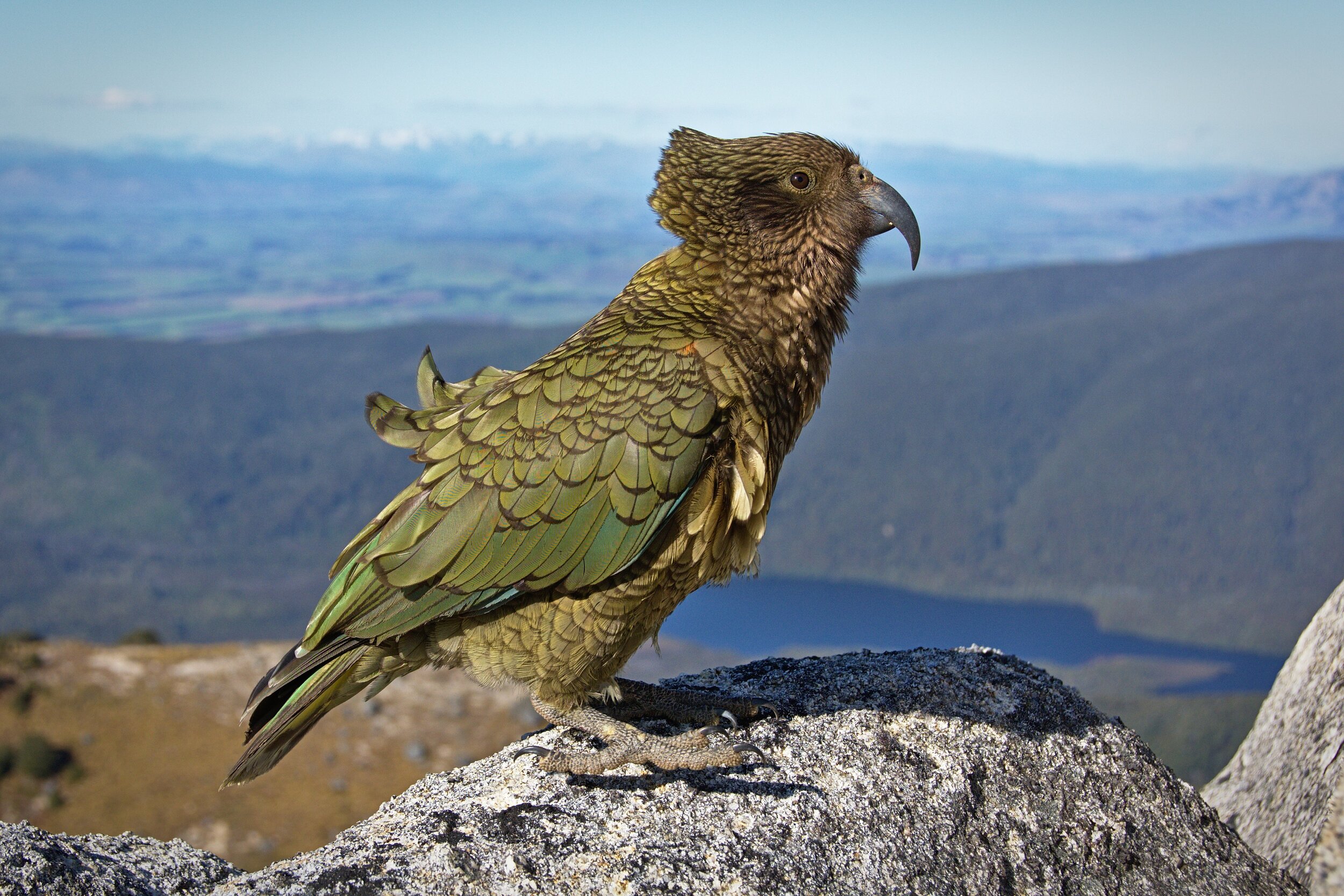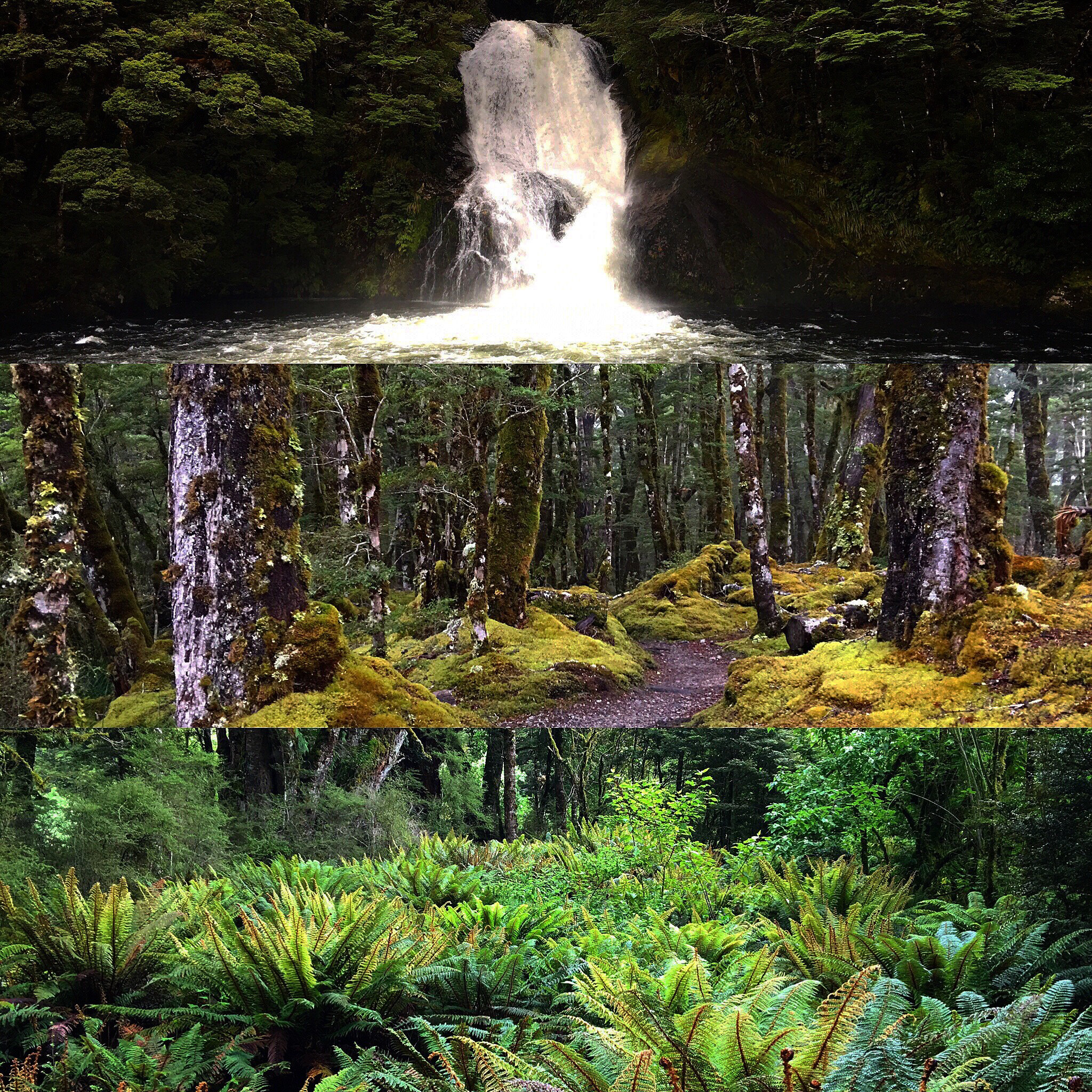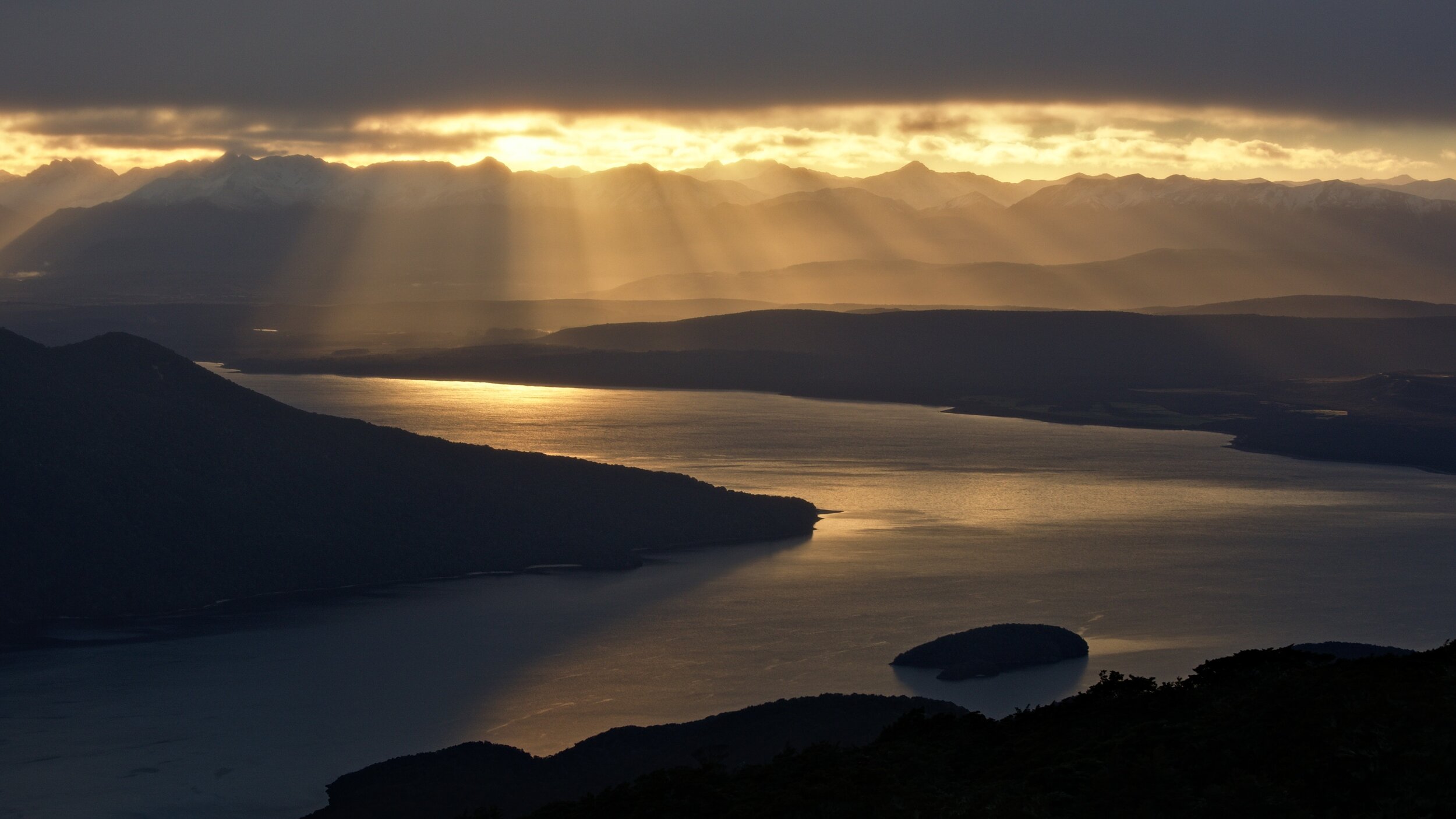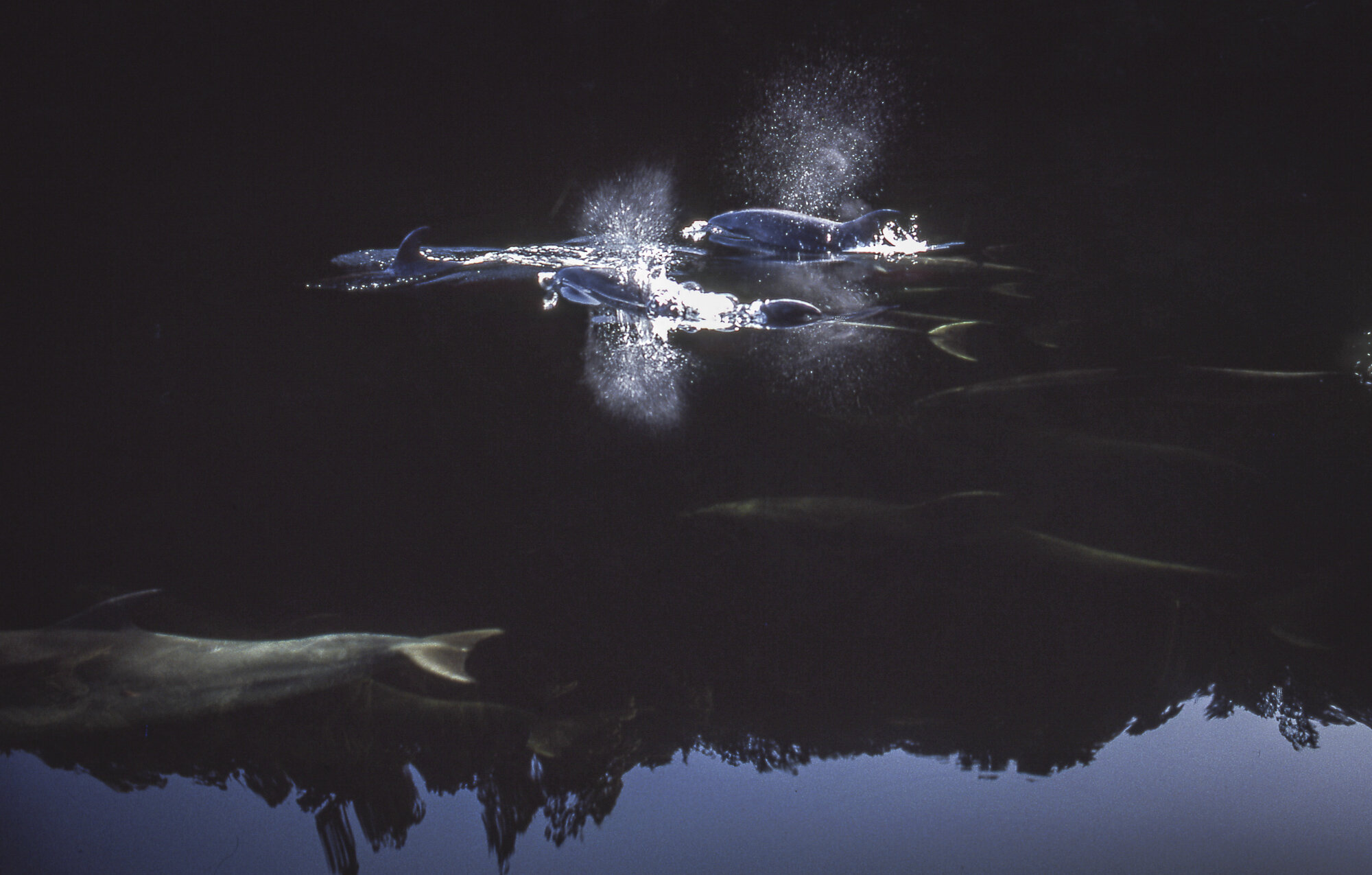THE LAND OF FIORDS
At the bottom of New Zealand’s South Island on the west coast is part of a World Heritage Area called Fiordland National Park, the wildest, wettest and most isolated part of this country. Known to the original Māori inhabitants as Te Wāi Pounamu “ the greenstone waters”, the 2.6 million hectare site covers almost 10% of New Zealand’s total land area and encompasses not only Fiordland National Park but also three other national parks: Westland Tai Poutini, Aoraki/Mount Cook and Mount Aspiring.
Carved by 15 fiords, home to a prolific and remarkable mix of flora and fauna, from alpine parrots to black coral, pods of bottlenose dolphins, moss carpeted valleys and vertical mountain sides with waterfalls dropping over 850m, Fiordland is indisputably one of the world’s last great wilderness areas in the southern hemisphere.
A fiord is defined as a u-shaped glacier-carved valley which has been flooded by the sea. What makes this area so unhospitable is the wet stuff falling from the sky. Two-thirds of the park are covered by virgin beech and podocarp forest. These are trees that have stood unmolested for 200 years or more. A 500-kilometre network of walking tracks allows visitors to explore the primeval world of mountain peaks, alpine lakes and moss-carpeted valleys. What makes Fiordland unhospitable is the wet stuff falling from the sky. In 2015, over 7068mm of rain fell in Milford Sound during that year. That’s 7m of rain or 22 feet…..That’s a lot of water.Locals joke that more than three days in Fiordland without rain is a drought! Combined by gale force winds means that waterfalls often curl back on themselves and flow upwards….
In fact there is so much fresh water that diving in the fiords make for an eerie exercise where you dive through up to 10m of fresh water the colour of dark tea before suddenly accessing crystal clear salt water where a very limited amount of sunlight penetrates.
My diving experiences in Fiordland are also mixed with images of wild weather, pelting rain and violent gusts of winds pushing the boats on an angle and waterfalls all over the cliffs. But also of serene calm and silence in warm sunlight, especially during a survey where I was asked to be a boat operator for a Marine Sciences student who was doing the first survey of bottlenose dolphins in remote Doubtful Sound. Every morning leaving by boat and looking for dolphins, trying to photographs markings on their back to identify them, surrounded by steep cliffs covered with forests. I also remember my first visit to the much celebrated Milford Sound, in a snow storm, pitch black skies and snow flurries as we negotiated a twisty road heading down to the Sound. And of course, hiking on some of the famous walking tracks like the Routeburn Track (great sunshine and stunning views) or the Keppler Track (cloud and rain the whole time).
Starting in 2024 we will be offering the option of a 2-night cruise on a private yacht cruising one of the most remote fiords.Contact us if you want to start planning your New Zealand adventure for 2024!.



